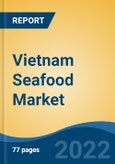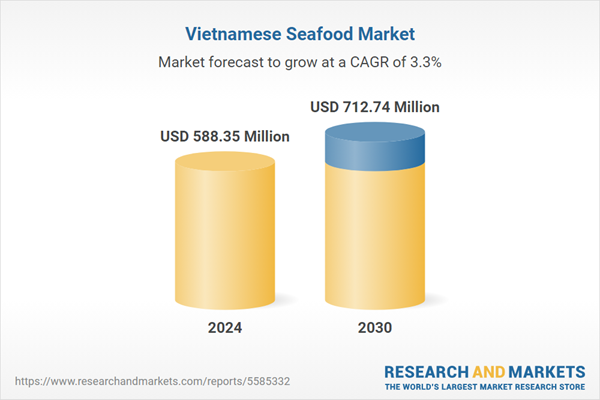Speak directly to the analyst to clarify any post sales queries you may have.
10% Free customizationThis report comes with 10% free customization, enabling you to add data that meets your specific business needs.
Key Market Drivers
Strong Export Demand and Global Trade Agreements
Vietnam’s seafood market is significantly propelled by robust international demand, with the country standing as one of the top global exporters of shrimp, pangasius, and tuna. The Vietnamese seafood industry benefits from strategic trade partnerships and free trade agreements (FTAs) such as the EU-Vietnam Free Trade Agreement (EVFTA), the Comprehensive and Progressive Agreement for Trans-Pacific Partnership (CPTPP), and the Regional Comprehensive Economic Partnership (RCEP). These agreements have not only lowered tariffs but also increased the competitiveness of Vietnamese seafood products in high-value markets like the European Union, Japan, South Korea, and the United States.As a result, Vietnam has been able to diversify its export destinations and reduce dependence on any single market. Vietnam is the world’s leading producer and exporter of pangasius, contributing 52% to global production and accounting for 90% of international trade in the species. In 2023, global pangasius output totaled 3.1 million tons, with projections indicating a rise to 3.2 million tons in 2024. These trade deals have also encouraged seafood producers to enhance product quality and safety standards to comply with international norms. By expanding access to global markets and reducing trade barriers, these agreements have acted as a strong catalyst for the growth of Vietnam’s seafood sector. The continued growth in global seafood consumption, particularly for sustainably sourced and traceable products, aligns with Vietnam’s evolving production capabilities, further fueling export momentum.
Key Market Challenges
Environmental Degradation and Climate Change Impacts
One of the most significant challenges facing Vietnam's seafood market is the adverse impact of environmental degradation and climate change on aquaculture and wild fisheries. Rising sea levels, increasing water salinity, frequent flooding, and erratic weather patterns are directly affecting the productivity and sustainability of aquaculture systems, particularly in the Mekong Delta, the country’s seafood heartland. Additionally, pollution from agricultural runoff, industrial waste, and plastic debris is contaminating water bodies, leading to habitat loss and a decline in fishery resources.Overfishing and illegal fishing practices have further strained marine biodiversity, depleting fish stocks and threatening long-term viability. These environmental issues are compounded by the limited capacity of small-scale farmers to invest in climate-resilient technologies or shift to more sustainable farming models. The unpredictable nature of climate-related disruptions makes long-term planning and investment riskier for seafood producers and exporters. Without urgent and sustained efforts to implement sustainable aquaculture practices and improve coastal ecosystem management, the environmental threats could undermine Vietnam’s seafood production base and weaken its position in both domestic and international markets.
Key Market Trends
Rise of Sustainable and Eco-Certified Seafood Products
Sustainability is no longer a niche concern but a mainstream trend shaping the future of Vietnam's seafood market. International buyers, especially in the EU, U.S., and Japan, are increasingly demanding eco-certified seafood products that adhere to globally recognized standards like ASC (Aquaculture Stewardship Council), MSC (Marine Stewardship Council), and GlobalGAP. In response, Vietnamese producers and processors are investing in environmentally responsible aquaculture practices, including the use of organic feed, reduction of antibiotic use, and improved water management systems. Companies are also adopting sustainable fishing techniques and traceability technologies to meet buyer requirements and regulatory expectations.This shift is supported by NGOs and multilateral organizations providing technical assistance and funding to upgrade operations. Moreover, as consumers around the world become more conscious of ethical sourcing and marine conservation, eco-labeled seafood is commanding premium prices, encouraging Vietnamese exporters to adopt green certifications as a competitive differentiator. Domestically, large retailers are beginning to follow this trend by stocking responsibly sourced seafood to cater to the rising eco-awareness among urban consumers. As a result, sustainability is transforming from a compliance issue into a market-driven growth opportunity within Vietnam’s seafood sector.
Key Market Players
- Camau Seafood Processing & Service Joint Stock Corporation
- Hung Vuong Joint Stock Company
- Minh Phu Seafood Joint Stock Company
- Vinh Hoan Corporation
- Quoc Viet company
- Pinetree Vietnam Co., Ltd
- Sao Ta Foods Joint Stock Company
- An Giang Fisheries Import & Export Joint Stock Company
- SOC Trang Seafood Joint Stock Company
- Thuan Hung Fisheries Company Ltd.
Report Scope:
In this report, the Vietnam Seafood Market has been segmented into the following categories, in addition to the industry trends which have also been detailed below:Vietnam Seafood Market, By Product Type:
- Fishes
- Shrimps
- Oysters
- Snails
- Others
Vietnam Seafood Market, By Type:
- Fresh
- Frozen
Vietnam Seafood Market, By Distribution Channel:
- Supermarket/Hypermarket
- Traditional Retails
- Online
- Others
Vietnam Seafood Market, By Region:
- Northern Vietnam
- Southern Vietnam
- Central Vietnam
Competitive Landscape
Company Profiles: Detailed analysis of the major companies present in the Vietnam Seafood Market.Available Customizations:
With the given market data, the publisher offers customizations according to a company's specific needs. The following customization options are available for the report.Company Information
- Detailed analysis and profiling of additional market players (up to five).
This product will be delivered within 1-3 business days.
Table of Contents
Companies Mentioned
- Camau Seafood Processing & Service Joint Stock Corporation
- Hung Vuong Joint Stock Company
- Minh Phu Seafood Joint Stock Company
- Vinh Hoan Corporation
- Quoc Viet company
- Pinetree Vietnam Co., Ltd
- Sao Ta Foods Joint Stock Company
- An Giang Fisheries Import & Export Joint Stock Company
- SOC Trang Seafood Joint Stock Company
- Thuan Hung Fisheries Company Ltd.
Table Information
| Report Attribute | Details |
|---|---|
| No. of Pages | 87 |
| Published | July 2025 |
| Forecast Period | 2024 - 2030 |
| Estimated Market Value ( USD | $ 588.35 Million |
| Forecasted Market Value ( USD | $ 712.74 Million |
| Compound Annual Growth Rate | 3.2% |
| Regions Covered | Vietnam |
| No. of Companies Mentioned | 10 |









